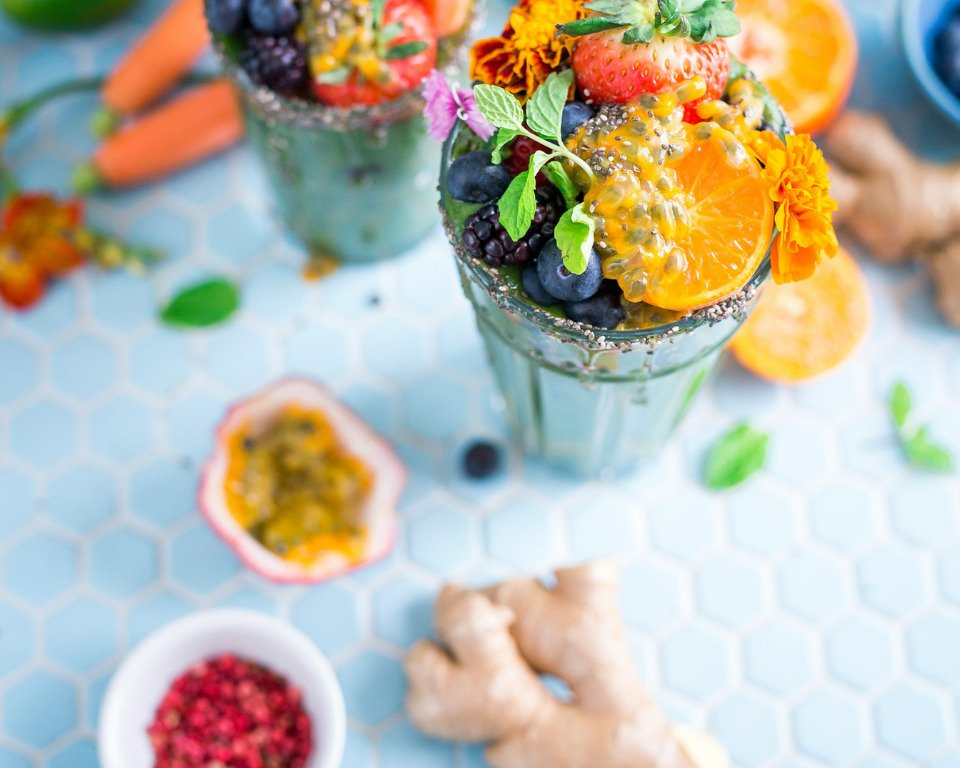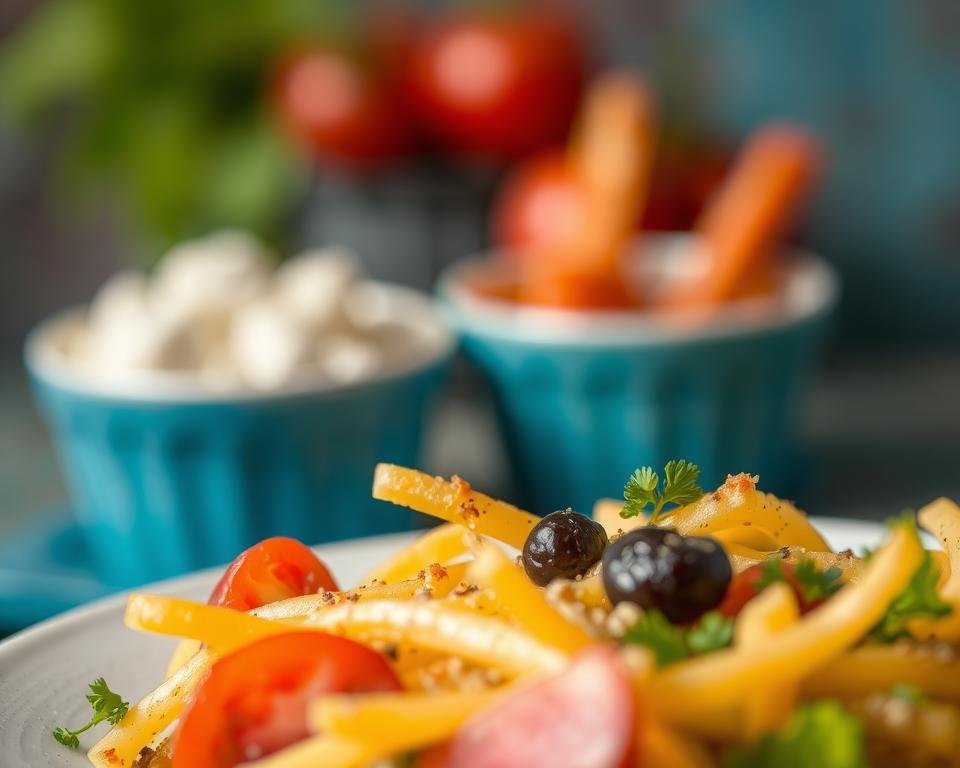Did you know that about 8% of the world’s people struggle with swallowing? This problem, called dysphagia, affects more than 68% of those in aged care. Texture in our food is more than just taste; it’s key to our health.
Texture is vital in meal planning. It shapes how we feel about our food and our eating experience. With more people cooking at home, texture helps make meals balanced and enjoyable. It also helps reduce food waste and meets different dietary needs, like those with dysphagia.
In this quick guide, we’ll look at how texture matters in our meals. We’ll find ways to make meals that are both balanced and satisfying. Join us as we explore texture and make dining more fulfilling.
Understanding Texture in Meal Planning Basics
Texture is key in meal planning. It makes eating fun and satisfying. From smooth purees to crunchy bits, each texture offers a unique taste.
Different Types of Food Textures
The IDDSI framework helps us understand food textures. It ranges from soft to crunchy. This guide is great for planning meals for those with special needs or preferences.
- Soft and Smooth: Pureed, mashed, or blended foods that require minimal chewing effort.
- Soft and Lumpy: Foods with a slightly coarser texture, such as cottage cheese or soft-cooked vegetables.
- Crunchy and Crispy: Foods that provide a satisfying crunch, like fresh vegetables, nuts, or crackers.
- Chewy and Fibrous: Foods with a more substantial, fibrous texture, such as cooked meats or toasted bread.
The Role of Texture in Dietary Satisfaction

Adding different textures to meals makes them more satisfying. It makes eating more exciting. This can lead to feeling fuller and more content.
Impact on Overall Eating Experience
Texture affects how we see and taste food. Crunchy foods can make flavors pop, while soft foods feel indulgent. Mixing textures makes meals memorable and enjoyable.
| Texture Type | Examples | Benefits |
|---|---|---|
| Soft and Smooth | Pureed soups, mashed potatoes, yogurt | Easy to chew and swallow, suitable for individuals with dental issues or difficulty chewing |
| Crunchy and Crispy | Fresh vegetables, nuts, crackers | Provides a satisfying sensory experience, can enhance flavor perception |
| Chewy and Fibrous | Cooked meats, toasted bread, dried fruits | Promotes a sense of fullness and satiety, adds variety to the eating experience |
“Incorporating a range of food textures into a meal plan can significantly enhance the overall dining experience and promote greater dietary satisfaction.”
How Is Texture Important to My Meal Plan
Texture is key to making meals balanced and enjoyable. When you think about texture importance in your meal planning strategy, you ensure your meals are not just healthy. They also make dining a pleasure.
Adding different textures to your meals makes them more fun and tasty. Soft foods can be paired with crunchy or chewy ones. This mix creates a great contrast that wakes up your senses. It can also help people eat more, even if they have trouble swallowing or are sensitive to certain foods.
- Texture variety can address specific dietary needs, such as modifying the consistency of foods for individuals with dysphagia or other conditions.
- Textures can also contribute to the feeling of satiety, helping you feel fuller for longer and potentially supporting weight management efforts.
- Thoughtful use of textures can enhance the visual appeal of your meals, making them more enticing and enjoyable to consume.
By focusing on texture importance in your meal planning strategy, you can make meals that are both healthy and satisfying. Mixing up textures can make your meals more balanced and enjoyable.
“Texture is the unsung hero of a great meal. It’s what makes a dish truly satisfying and memorable.”
Essential Texture Categories for Balanced Meals
A well-balanced meal is more than just nutrients. It’s also about the mix of textures. Adding different textures to your meals can make them more enjoyable. It also helps your body get the nutrients it needs. Let’s look at the key texture categories for a balanced meal.
Soft and Creamy Textures
Soft and creamy textures, like yogurt, mashed potatoes, or soups, feel comforting. They balance out the meal by contrasting with crunchy or fibrous foods. This mix of sensations makes the meal more enjoyable.
Crunchy and Crispy Elements
Crunchy and crispy textures, such as raw veggies, nuts, or chips, add excitement. They make the meal more engaging by providing a satisfying crunch. This crunch complements the softer parts of the dish.
Chewy and Fibrous Components
Chewy and fibrous textures, found in meats, grains, and legumes, add structure to the meal. They take longer to chew, which encourages you to eat more mindfully. This helps you feel fuller.
| Texture Category | Examples | Nutritional Benefits |
|---|---|---|
| Soft and Creamy | Yogurt, mashed potatoes, pureed soups | Provide a soothing and comforting mouthfeel, balance out the meal |
| Crunchy and Crispy | Raw vegetables, toasted nuts, baked chips | Add an exciting dimension, stimulate the senses, complement softer components |
| Chewy and Fibrous | Meats, whole grains, legumes | Contribute to the structural integrity of the meal, encourage mindful eating, provide a sense of satiety |
By mixing different textures in your meals, you can make them more balanced and satisfying. This approach meets your body’s nutritional needs in a fun way.
Creating Texture Variety in Daily Meals
Making a meal plan interesting means focusing on food textures. Texture variety comes from smart meal planning and using different food preparation techniques.
Try different cooking ways to add unique textures. Steaming, roasting, pureeing, and eating foods raw each give special feels in your mouth. Mix soft foods with crunchy toppings or different grain sizes for contrast.
Seasons also help with texture variety. In summer, enjoy crisp salads. Winter brings warm, soft stews. Use what’s in season to add variety to your meals.
| Texture Techniques | Desired Texture | Example Dishes |
|---|---|---|
| Steaming, Pureeing | Soft, Creamy | Mashed Potatoes, Butternut Squash Soup |
| Roasting, Pan-Frying | Crispy, Crunchy | Roasted Brussels Sprouts, Fried Chicken |
| Slow-Cooking | Tender, Chewy | Braised Short Ribs, Beef Stew |
Adding a mix of food textures to your meals makes eating more fun. It’s not just about looks; it’s about feeling good too.
Texture Modification Techniques for Special Dietary Needs

People with dysphagia or special diets often struggle with eating. Luckily, there are ways to make food easier and tastier. Techniques like pureeing and blending can change food’s texture without losing its nutrients.
Pureeing and Blending Methods
Pureeing and blending make food smooth and easy to swallow. These methods break down ingredients, creating a creamy texture. This is great for those with swallowing problems, like dysphagia. Products like the Shape It range and Dysphagia Cup help with this, keeping food looking good and meals enjoyable.
Thickening and Softening Strategies
Thickening and softening are other ways to change food texture. Thickening agents, like gums or starches, make liquids easier to swallow. Softening foods, like cooking or steaming, makes them softer for those with special diets.
Temperature Effects on Texture
Food’s temperature can also change its texture. Some foods soften when heated, while others harden when chilled. Knowing how temperature affects texture is key for those with dysphagia or special diets, helping them tailor their meals.
Texture modification is vital for those with special diets to enjoy meals with dignity. By using these techniques, caregivers and healthcare professionals can make meals more enjoyable and nutritious for everyone.
Combining Textures for Maximum Nutritional Benefits
Mixing different textures in your meals can make them more appealing and nutritious. For example, adding crunchy nuts to creamy yogurt boosts protein and healthy fats. Mixing pureed veggies into mashed potatoes increases fiber and vitamins without changing the taste.
Choosing the right textures can help you eat a variety of healthy foods. This supports your health and dietary goals. Soft and smooth textures paired with crunchy ones make meals satisfying and full of nutrients.
Trying new texture combinations in cooking can make your meals more fun and tasty. Pairing crisp veggies with creamy dips or tender meat with crunchy slaws is a great way to enhance flavor and nutrition.
FAQ
What is the importance of texture in meal planning?
Texture is key in meal planning. It affects how satisfying and enjoyable our meals are. With more people cooking at home, texture has become even more important.
It helps reduce food waste and improves nutrition. It also meets the needs of those with special diets or swallowing issues.What are the different types of food textures?
Food textures range from soft to crunchy. Mixing different textures makes meals more interesting. The IDDSI framework helps plan meals for various needs.
How does texture affect the overall eating experience?
Texture influences how we enjoy our meals. It affects flavor, satisfaction, and enjoyment. Texture makes meals appealing, which can help prevent malnutrition.
What are the essential texture categories for balanced meals?
Good meals have a mix of textures. This includes soft, crunchy, and chewy foods. These textures make meals diverse and nutritious.
How can texture variety be created in daily meals?
To add texture variety, try different cooking methods. Use steaming, roasting, and raw preparation. Mix soft foods with crunchy toppings for a great mix.
What are the texture modification techniques for special dietary needs?
For those with special needs, modifying textures is important. Pureeing and blending make foods smooth. Thickening agents and softening techniques help too.
Temperature also changes texture. Heating or chilling can make foods softer or firmer.How can combining different textures optimize nutritional intake?
Mixing textures makes meals more appealing and nutritious. For example, adding nuts to yogurt boosts protein and healthy fats. This encourages eating a variety of nutrients, supporting health.



